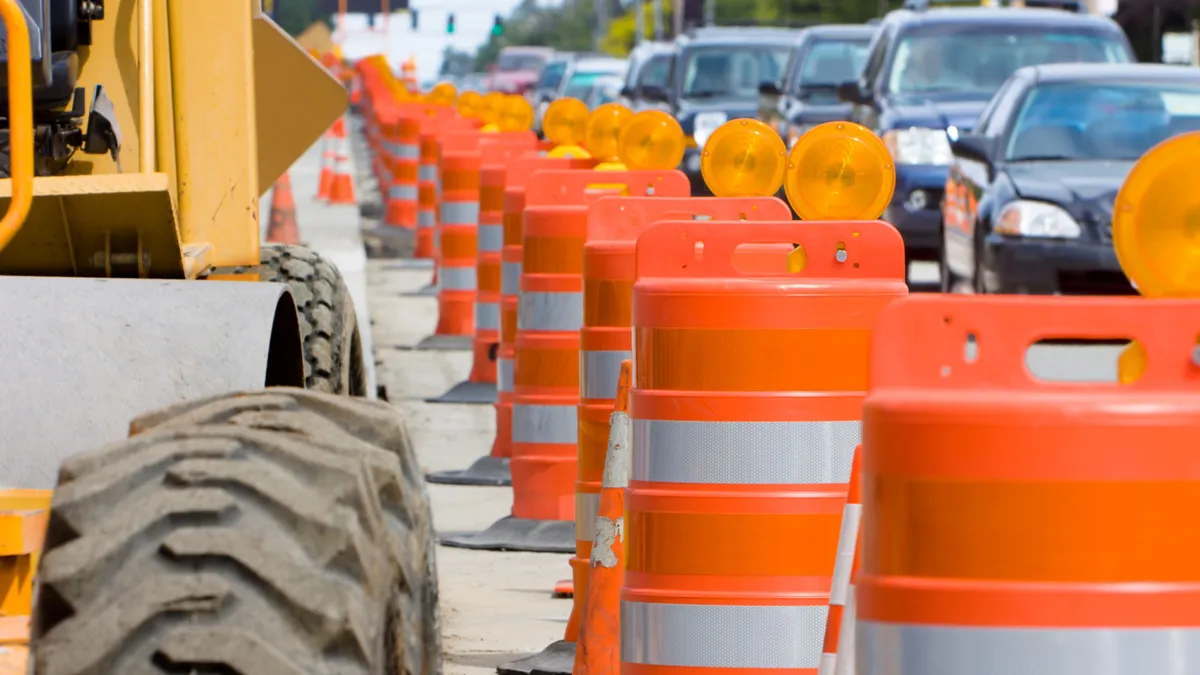
National Work Zone Safety Awareness Week spotlights tragic loss and calls for change
The construction industry is calling for stronger federal policies and funding to address a growing crisis: the rising number of fatalities in roadway work zones. Kicking off this year’s National Work Zone Safety Awareness Week, the industry is rallying around the theme “Respect the Zone – So We All Get Home,” highlighting the urgent need to protect both construction workers and motorists navigating active job sites.

The campaign is underscored by a tragic loss. James Harper, a 24-year-old construction worker, was killed on April 15 while filling a pothole on Interstate 77 between Kanawha City and Marmet, West Virginia, after a tractor-trailer struck him. According to WSAZ 3, the driver involved has been arrested and charged with vehicular manslaughter.
As the nation mourns Harper and others like him, jobsites across the country are hosting a week of events to spotlight the dangers of highway construction zones. This includes a social media push, “Go Orange” safety campaigns, and a nationwide moment of silence to honor those killed in work zone crashes.
“It’s important to grasp the meaning of this year’s theme,” said Stacy Tetschner, President and CEO of the American Traffic Safety Services Association (ATSSA), in a statement. “It reflects the sad reality that the majority of people killed in work zone crashes are drivers and their passengers. That’s why it’s critical to put away all distractions, slow down and stay alert when approaching and passing through a roadway work zone.”
Federal data backs up that grim reality. In 2022, there were 891 work zone fatalities, according to the National Work Zone Safety Information Clearinghouse. Of those, 136, or roughly 15%, were workers or pedestrians—highlighting that motorists themselves are often at the greatest risk.
Still, construction professionals face these hazards daily. A 2024 survey by the Associated General Contractors of America (AGC) and construction tech company HCSS found that two-thirds of highway contractors experienced a vehicle crash in a work zone that year. Roughly a third of those surveyed reported no such incidents, while another third said they’d encountered five or more crashes on their sites.
Contractors are increasingly frustrated by what they see as insufficient enforcement and penalties for reckless driving through work zones. According to the AGC survey, most believe their state governments lack adequate deterrents to improve driver behavior.
To tackle the issue at a national level, ATSSA and the National Asphalt Pavement Association (NAPA) announced a new coalition on April 17 that will advocate for stronger work zone safety provisions in the next federal highway bill.
“Over the last year, awareness and education has really been the center point in our efforts on the Hill, making work zone safety top-of-mind for members of the House (Transportation and Infrastructure) committee,” said Mitch Baldwin, Director of Government Affairs for NAPA.
One critical piece of the puzzle is funding. The Infrastructure Investment and Jobs Act (IIJA) originally included contingency funds for work zone safety, meant to give contractors access to federal dollars to enhance safety measures such as signage, barriers, and worker training. But the rollout has been slow—only three states have utilized the funding so far, according to Baldwin.
In response, the coalition is pushing for the formation of a federal working group on work zone safety. The goal is to create a platform where government agencies, industry stakeholders, and worker advocates can collaborate on solutions.
“We want everyone on the roadways to get home safely,” Tetschner said.
As construction season ramps up across the U.S., the message is clear: until stronger policies and protections are in place, both workers and motorists will remain at risk in America’s work zones.
Originally reported by Zachary Phillips in Construction Dive.
The smartest construction companies in the industry already get their news from us.
If you want to be on the winning team, you need to know what they know.
Our library of marketing materials is tailored to help construction firms like yours. Use it to benchmark your performance, identify opportunities, stay up-to-date on trends, and make strategic business decisions.
Join Our Community






